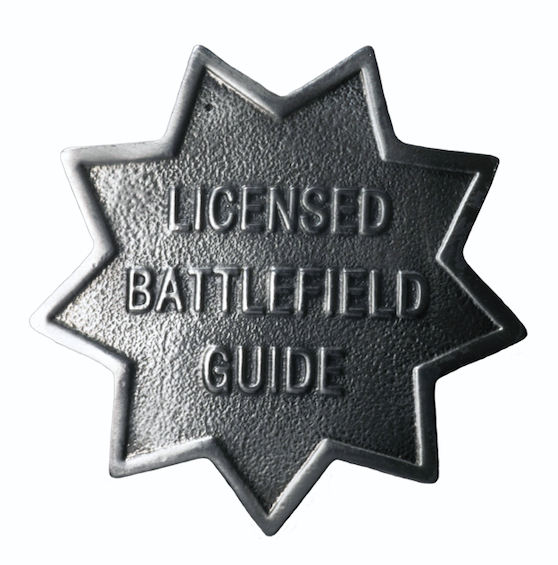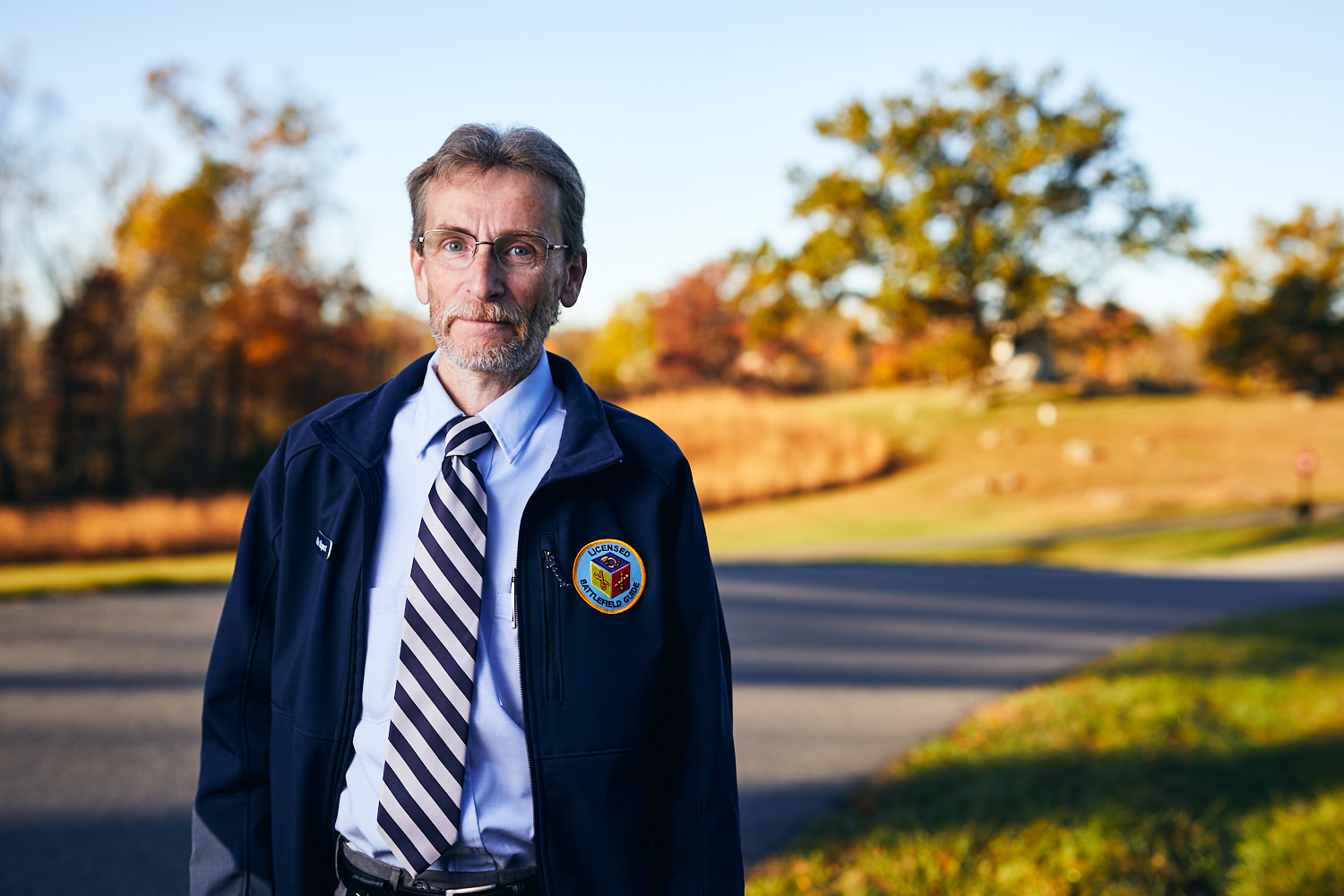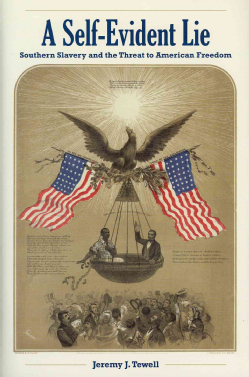
On a Saturday morning this past April, a tiny compact car pulled into the parking lot at the Gettysburg National Military Park’s visitors center. Out of the car popped four women, college friends who were in the area for a wedding. A few of them liked history, so the group had booked a tour.
At Gettysburg, battlefield tours are two-hour affairs. A licensed battlefield guide takes the keys to your car and drives you to points all around the vast field, managing to break down one of the most militarily complex multiday battles of the Civil War into a narrative that anyone can follow. In history circles, Gettysburg guides are legendary for their deep and detailed knowledge of the battle—and, equally, for the sheer fact that they passed the brutal test to earn a guiding badge. The exam has been respectfully, even reverently, dubbed “the hardest test in history.” (The Civil War Monitor ran a feature-length article on the test in the Summer 2013 issue.)
On this day, the guide who greeted the four women was Michael Rupert. Wiry, unassuming, and sporting a neatly trimmed beard and a shiny badge, Rupert was the opposite of a relaxed wedding guest. “I was petrified,” he admits. Even as he introduced himself, jammed himself into their tiny car, then launched them all back to 1863 with his words, the enormity of the moment seized him. It was his first official tour as a newly minted licensed battlefield guide—and the end of his 18-year quest to become one.
Rupert, 53, grew up in Pittsburgh. He went the vocational route in high school, becoming a master mechanic at age 19. He figured cars would be his life. He was well into that life when, in 2001, he drove his wife and son to Gettysburg for vacation. Rupert had a vague interest in Pennsylvania history but knew nothing about the Battle of Gettysburg or the broader Civil War. But driving around the battlefield, he felt awestruck. “The field just kind of grabbed me,” he recalls. When they stopped at the Pennsylvania State Memorial, etched with the names of the 34,530 Pennsylvania soldiers who fought there, Rupert recalls feeling something close to a gut punch.
Rupert started making regular battlefield visits, despite the 300-mile round trip from Pittsburgh. He amassed books on Gettysburg and attended seminars and Civil War roundtables. He soon felt more connected to Gettysburg and what had happened on that field than he ever had to anything automotive. Somewhere along the way, Rupert grabbed onto the idea of becoming a battlefield guide. “I thought, if there’s away I can make even part of a living telling people the story and showing them the field, then I’m going to do it,” he recalls.
Just one problem, of course: the hardest test in history.
Becoming a licensed battlefield guide is a fraught process. The guiding test is typically offered every few years, and of the roughly 150 who take it, fewer than 10 make it all the way through. For many years, the test had two parts. The first was a written exam requiring test-takers to know the battle and the battlefield in bewildering detail. (How many non-border-state state monuments are on the field? The Confederate infantry assault known as Pickett’s Charge began at what time? Which Union division was first to occupy the Wheatfield? How many unknown Union soldiers are buried at Gettysburg National Cemetery?) Passing the test required an intensity of study bordering on the fanatical. The problem, remarkably, was that too many people did well: Scoring 95 percent rarely got you through. Those who passed then faced an oral exam in the form of a two-hour battlefield tour. But dumping all that detail from your brain to deliver a general tour designed for visitors who’ve never heard of Robert E. Lee, let alone James Longstreet, is not a switch many can throw. Half who passed the written failed the oral.
Rupert took the written test in 2008 and didn’t pass. Two years later he tried again and scored the dreaded 95 percent (the 19 who moved on got 96.6 percent or higher). Two years after that he got felled by a multipart question about artillery positions. Rupert was now 11 years and three tests into his quest and frustrated, but oddly hopeful. “Becoming a guide requires multiple years and multiple layers of understanding,” he reckons. “It’s not something you should be able to do quickly.”

Gettysburg Licensed Battlefield Guide Michael Rupert
Three years later, in 2015, he took the test again. But it was different. There were essays this time, plus more questions in line with the kind that guides might need to answer on tours. The obscure “non-border-state state monument” type of questions were still there. But for test- takers who gloried in that minutiae, the hardest test in history had just gotten harder. “You have to go all the way down to the lowest common denominator and that, believe it or not, is what you’re tested on,” explains Rupert. “They already know that you can go up. You have to be able to go down. You have to prove you can say it very simply, otherwise you’re never going to make it all the way.”
Rupert did prove it. He passed. Then came another new wrinkle: a panel interview had been added between the written and oral exams. At his interview, Rupert was all nerves. His answers were too detailed. But the question that ousted him wasn’t even about the battle. “They asked what qualified me to be a battlefield guide,” recalls Rupert. “I focused mostly on caring about this field and the men who fought here but left myself out of it. I don’t think I explained myself well enough as far as being able to say why I should be doing this. And maybe I just wasn’t there yet.”
Two more years of studying. Two more years of fixing cars.
In 2017 Rupert passed the written test again. A group of his Pittsburgh friends set up a mock interview panel, arranging the room exactly as he’d described it and pelting him with questions, for practice. It worked. He passed the interview. Now there was just one step left between Rupert and that badge.
Almost every weekend, for two months, Rupert trekked to Gettysburg to practice his two-hour tour. A licensed guide, Mary Turk-Meena, worked tirelessly with him on timing from stop to stop and what he’d say along the way. They went over park driving rules and worked lighter moments into his commentary so that it wasn’t all fighting and tactics. One day they were out for seven straight hours. Two days before the test, on a final dry run, Turk-Meena took five pages of notes. “I used too many names, I didn’t do this or that right,” he recalls. “She was meticulous.”
Rupert’s final exam was a blur. He started off rigid and nervous. But he obeyed all the stop signs, and kept talking. Examiners always pretend to be tourists from a particular state, so they can test a candidate’s ability to adapt to different audiences. Rupert’s said they were from Cincinnati. “I pointed out Ohio in the fight for Culp’s Hill, when the 5th and 7th Ohio fought to get their positions back on the morning of day three. I also pointed out the 4th Ohio troops who fought the evening of day two at the top of East Cemetery Hill as we passed,” he says. “I should have focused more on the 5th Ohio because they were specifically from the Cincinnati area, but I was too nervous to think to connect any of that.”
Afterward they had him write down everything he did well and everything he did badly. His list would have made Turk-Meena proud—he hit just about every point they’d observed. They also noted that he’d had less than a minute left in his two-hour window—just one second over and he’d have failed automatically. Then they said, “We’re not going to make you wait. You got it.” Rupert was stunned. Back at the visitors center, he flashed his wife a thumb’s up and she nearly melted with relief. Of the 17 who took the oral exam, nine passed. The rest would have to start all over again.
In April, on his first-ever tour, Rupert’s anxiety faded soon after he swung that compact car out of the parking lot. The wedding guests seemed engaged, and all of them asked questions. Since then Rupert has done 281 more tours (and counting) to every manner of guests. Some haven’t known the difference between Union and Confederate. Others were the opposite. Rupert recalls one tour he gave for 13 artillerymen who’d come by Army bus from Harrisburg. “Every one of them could have broke me in half like a pretzel,” he notes. They also knew the battle. So Rupert focused the tour on the decision-making of commanders. “But that’s just on the fly. You never really know what you’re going to get.”
Soon after Rupert earned his badge, the automotive shop where he’d worked for 23 years shut down. They could not stay in business without him. Rupert felt bad, but he had a new allegiance. “You feel like you want to do right by them,” he says of those long-ago soldiers. “Gettysburg is here because the men who fought there started marking the field. They wanted it to be remembered.” He adds: “I feel like I know these men, like I’m a part of their experience. My job is to keep their memory alive by continuing to tell the story of their service and their sacrifice on that field. And that’s what they wanted.”
JENNY JOHNSTON IS A FREELANCE WRITER AND EDITOR BASED IN SAN FRANCISCO.
This article appeared in the Winter 2019 issue of The Civil War Monitor.
